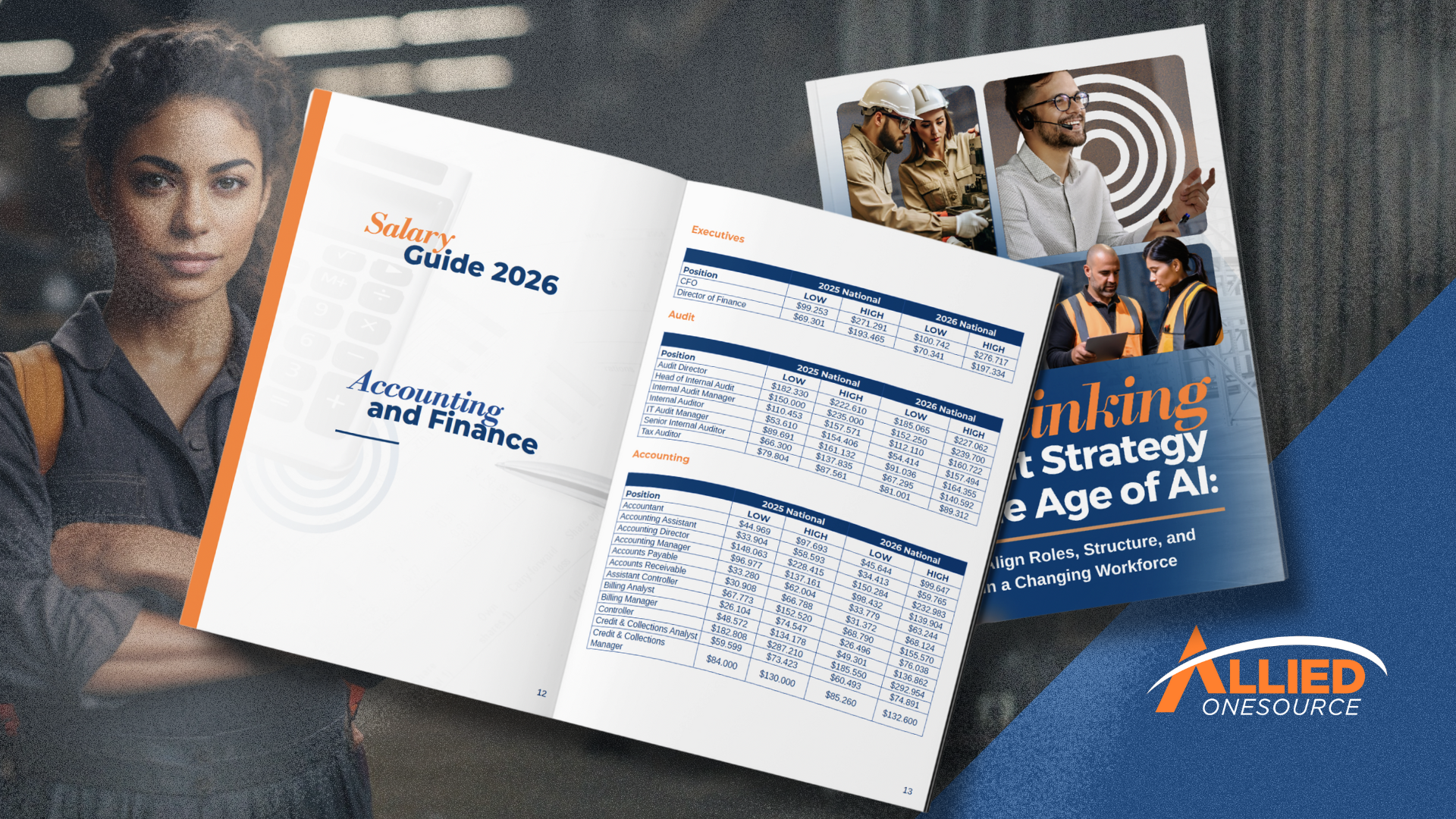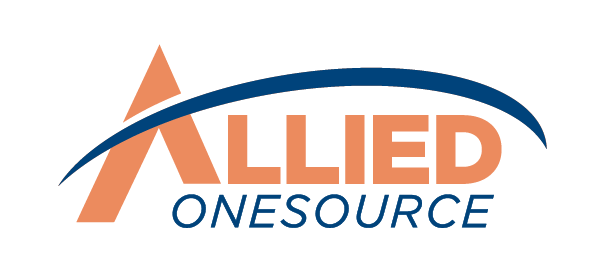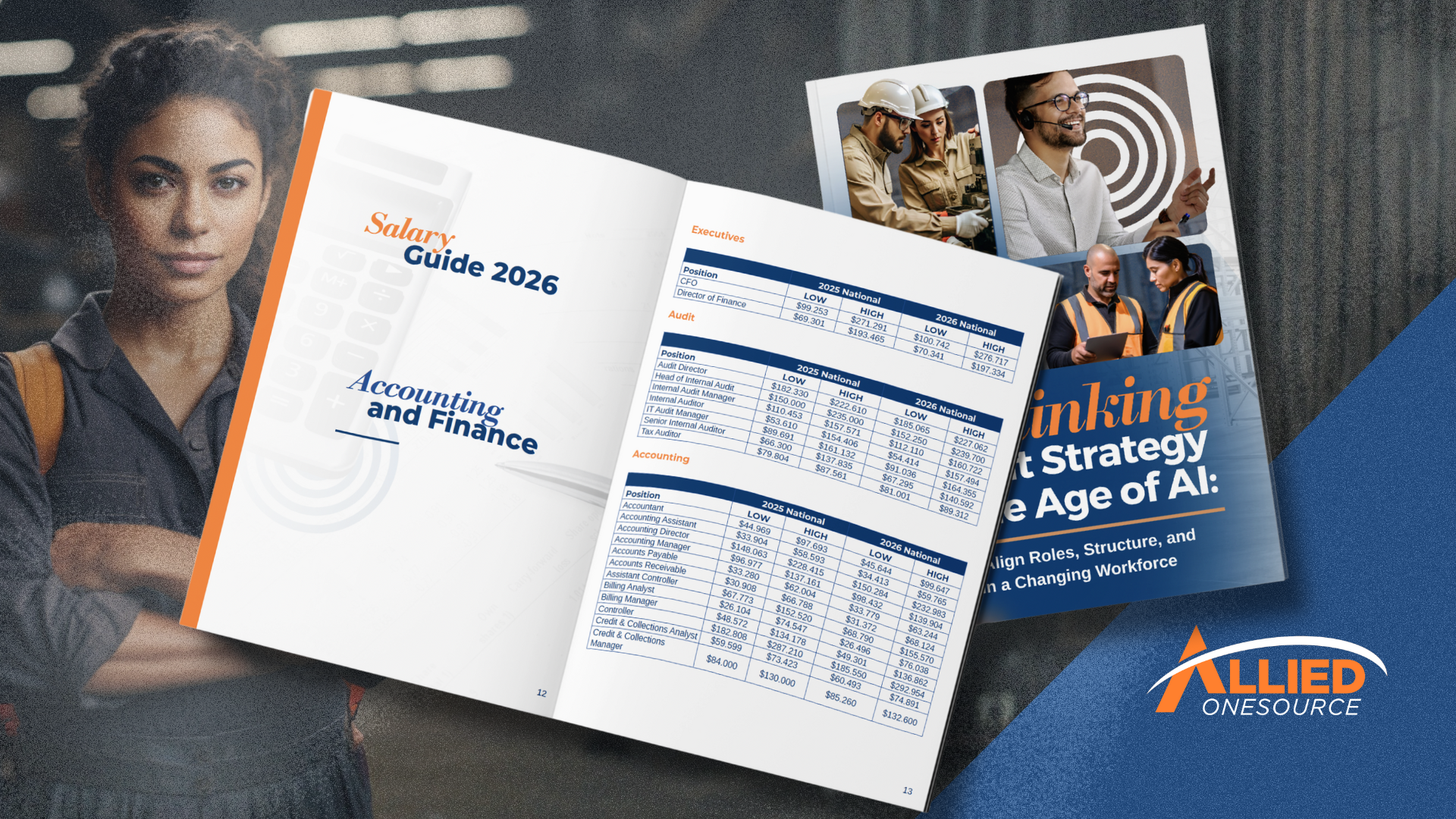How to Sustain Productivity During a High-Volume Hiring Surge in Industrial Roles
These days, the demand for staffing to meet production needs is high. Reports have found that more than 3.8 million new employees are needed in manufacturing.¹ However, it can be quite challenging to maintain productivity during a hiring surge.
If you’ve ever managed a manufacturing plant during a hiring surge, you might find that onboarding new employees quickly while maintaining uninterrupted operations feels like a balancing act, especially when there are projects that you’ve started but not yet completed.
Maintaining productivity while undergoing a hiring surge is like being stuck between a rock and a hard place - you need to hire and train new employees quickly, but you also need to keep operations running smoothly. Fortunately, with the right strategies and support, you can successfully navigate this challenging period while maintaining your productivity standards. Let's explore how.
The Impact of High-Volume Hiring on Operations
Manufacturing companies belong to a huge industry that needs long working hours to sustain high demand of production and customer needs. These industries often recruit a large number of people over a short period. When recruiting at a high volume, the process is time-consuming. This could lead to heavy workloads that significantly affect productivity.
During these periods, managers need to balance their core operational responsibilities with additional administrative tasks and training oversight. This divided attention can impact daily operations – once routine tasks take longer to complete, production targets might need temporary adjustment as new team members get up to speed.
It is crucial to consider the human element during these transitions. Experienced employees often take on additional mentoring responsibilities while maintaining their regular duties.
This adjustment period requires careful management to ensure both new and existing team members can perform effectively. With proper planning and support, teams can successfully navigate this transition while maintaining operational stability.
7 Strategies to Sustain Productivity
Below are some tips:
1. Streamline the Onboarding Process
How do you onboard high-volume hires? Using the methods developed for a recruitment process of one or a few people won't be efficient. However, the inefficiency may not just be due to time constraints; it can also depend on your onboarding process. Without a simplified onboarding process you risk creating bottlenecks that slow down both integration and operations.
How your new hire documents are collected makes a huge difference in time saved. If documents are collected individually, the onboarding process will be long. So, use pre-built checklists for all new hires to collect required documents like W-4, I-9, schedule orientation sessions, and assign training modules.
Are new hires getting role-specific training? Use training templates relevant to their roles and focus on what they need to know right now. For example, use a 3-day onboarding plan that outlines safety protocols, equipment handling basics, and job expectations for machine operators.
Digital tools can also provide software solutions to automate paperwork and track progress in real-time. For example, you can use Adobe Acrobat to automate onboarding paperwork, while using project management tools like Asana to provide updates on tasks completed.
Alternatively, pair new hires with experienced employees to offer mentorship and immediate support when they have questions. And don’t forget to prepare new hires before the start date by sending the company’s policies, FAQs, and safety training videos via email.
2. Maintain Clear Communication Channels
Effective internal coordination is key to managing high-volume hiring without disrupting your operations. Nothing works better than sharing detailed hiring plans with your managers and teams to match hiring goals and operational needs.
Ask current employees how new hires are integrating and whether additional support is needed. Take action on the feedback you receive, as that matters more than just getting feedback. Whatever they want, showing that you are willing to make changes based on their feedback goes a long way.
Use technology to provide communication tools like Slack or Microsoft Teams to keep everyone connected and informed through the hiring process.
3. Balance Shift Distribution
When integrating new hires, consider spreading them across different shifts rather than concentrating them in one timeframe. This distribution helps maintain consistent operations while ensuring proper training.
For example, rather than having one shift handle all the training (which could significantly impact that shift's output), distribute new employees so each shift can maintain steady productivity levels while effectively supporting new team members. This allows experienced employees to provide guidance without becoming overwhelmed and keep operations running smoothly during the transition period.
4. Create a Graduated Integration Plan
Instead of immediately placing new hires into full production roles, work with supervisors to develop a stepped approach to responsibilities. Start with fundamental tasks and gradually increase complexity as new employees build confidence and competency.
Set realistic milestones for their first few weeks - for instance, focusing on mastering core processes in week one before moving to more complex operations. This measured approach helps maintain quality and productivity standards while giving new employees time to adjust. Work with floor managers to track progress and adjust the integration pace based on individual and team performance.
5. Support Existing Employees During the Surge
High-volume hiring can place additional pressure on existing employees, so you need to support them during the process. If their workload is imbalanced, they will burn out, and productivity will tank. Think about it—who wouldn’t appreciate a bit of support?
Consider temporarily adjusting performance metrics to account for the additional training time. Provide clear guidelines on balancing core responsibilities with training duties and ensure they have the resources needed for both. For instance, team leads taking on new trainees might need a temporary reduction in their regular workload.
You can also create clear escalation paths for challenges during the integration period, such as designated contacts for different issues or regular check-ins.
Read More: Setting Up Your Workspace: Personalizing Your Office Desk for Comfort and Productivity
6. Monitor and Adjust Strategies for High-Volume Hiring
Effective high-volume hiring requires continuous assessment and refinement of your processes. Track key performance indicators (KPIs) that matter: How quickly are new hires reaching productivity targets? Are your integration methods working? Which departments are adapting most successfully?
- Create a data-driven approach to measure success:
- Track time-to-productivity metrics for new hires
- Monitor department productivity levels before, during, and after integration
- Measure the effectiveness of your training programs
- Assess the impact on quality control and error rates
Use this data to refine your processes for future hiring surges. For example, if certain departments consistently maintain higher productivity during integration, analyze their methods and apply the lessons to other areas.
7. Consider Temporary Staffing Solutions
Work schedules in manufacturing industries aren’t exactly flexible by nature. There are projects to complete and deadlines to meet. Staffing firms can help ease the transition during high-volume hiring periods by providing immediate access to qualified candidates and handling the complex recruitment process.
Partner with a reputable staffing firm that understands your industry's unique demands. These firms maintain networks of pre-screened, specialized talent pools and handle the time-intensive aspects of hiring, from sourcing and interviewing to initial onboarding and training. This allows your management team to focus on maintaining operations while ensuring you get the right talent when you need it.
Read More: A Deep Dive into The Impact of Recruitment Process Outsourcing (RPO) on Talent Acquisition
Allied OneSource can help turn high-volume hiring into a strategic advantage
High-volume hiring in industrial settings doesn’t have to disrupt operations or overwhelm your teams. With the right strategies, you can successfully manage hiring surges while sustaining productivity.
Doing all this might sound like too much work when you're busy with your projects. But it doesn’t have to be. Partner with Allied OneSource to help with your staffing solutions and worry a little less about juggling work with recruitment. And when you are ready to take the next step in the industry, you’ll be at the forefront because you have everything you need. Contact us today!
Reference
1. “Taking Charge: Manufacturers Support Growth With Active Workforce Strategies.” Deloitte Insights, 3 Sept. 2024, www2.deloitte.com/us/en/insights/industry/manufacturing/supporting-us-manufacturing-growth-amid-workforce-challenges.html.











